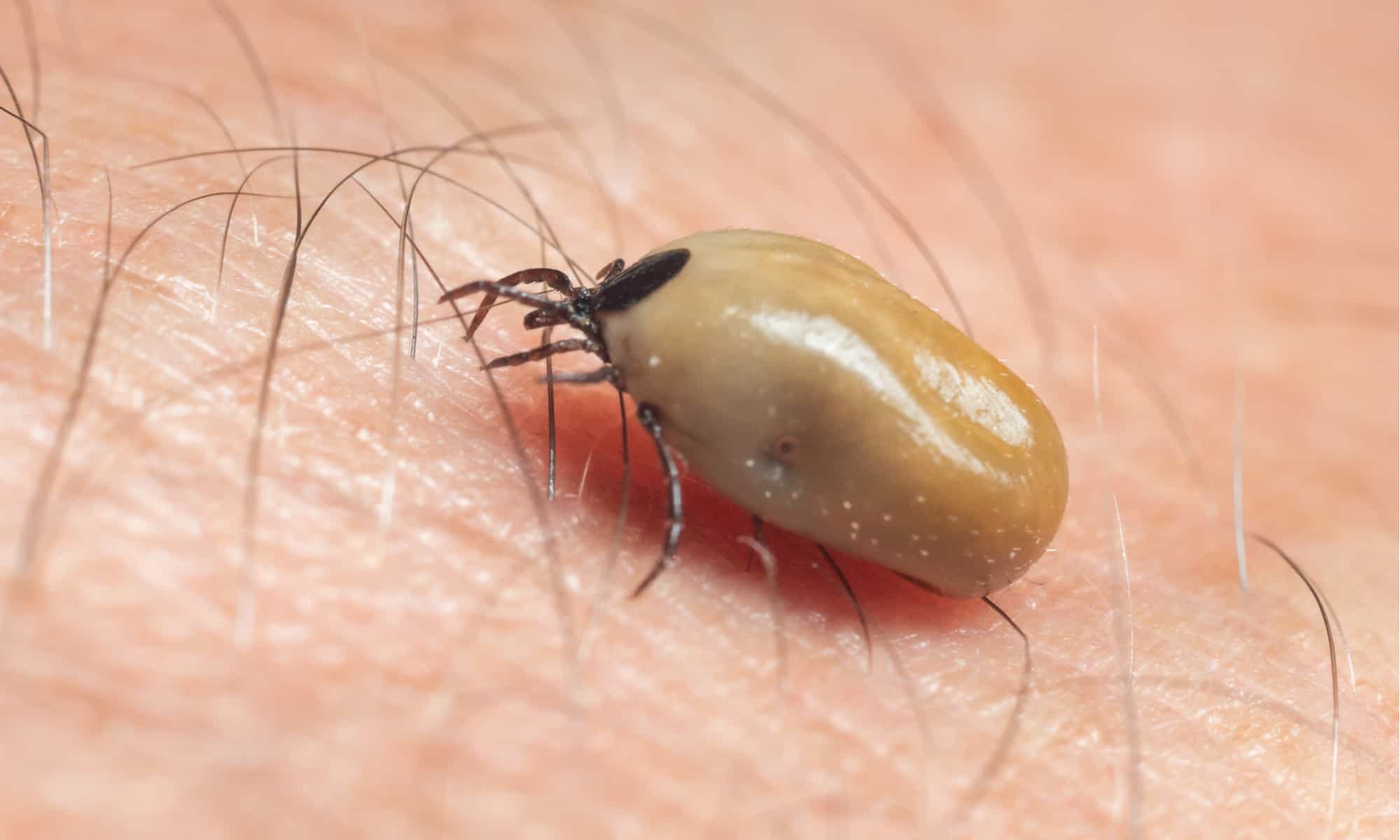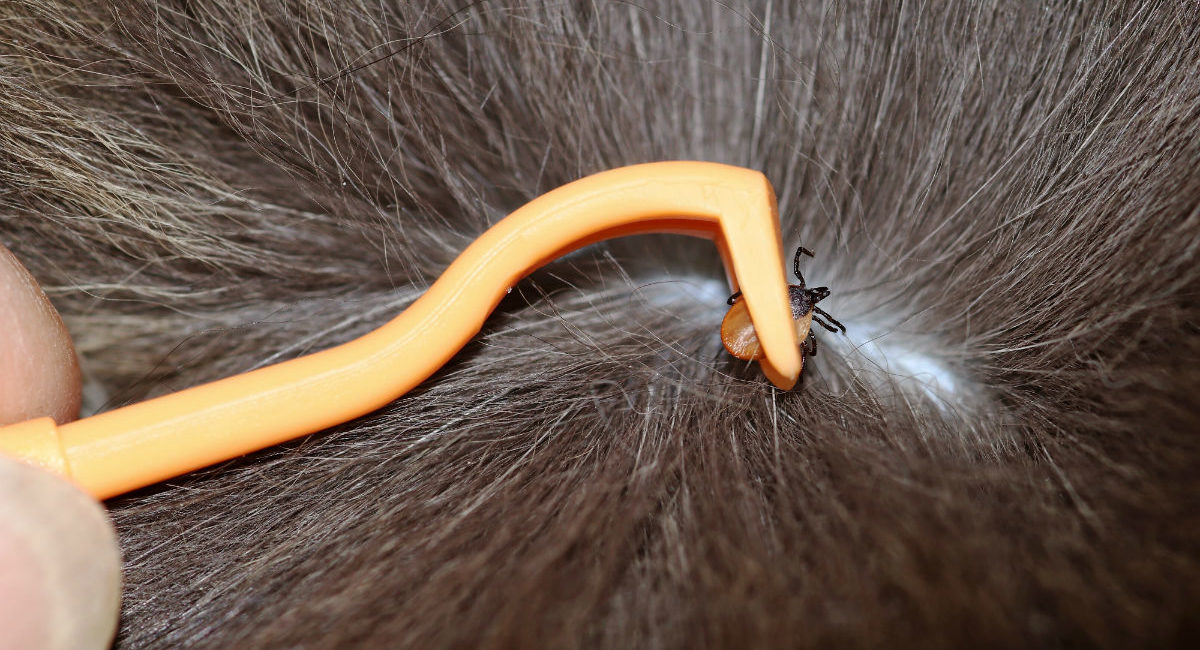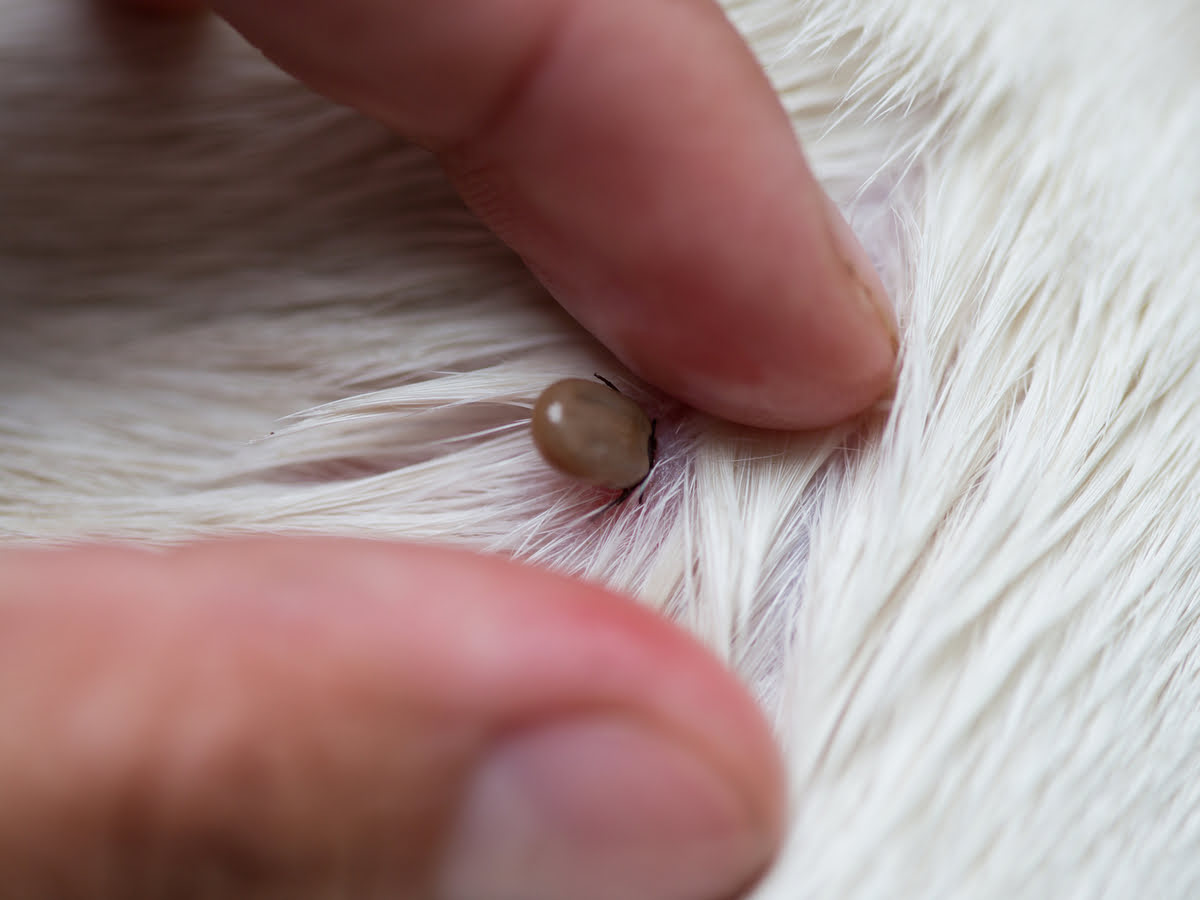Home>Health & Wellness>Common Health Issues>What Is The Difference Between Deer Ticks And Dog Ticks?


Common Health Issues
What Is The Difference Between Deer Ticks And Dog Ticks?
Published: February 5, 2024
Learn about the common health issues associated with deer ticks and dog ticks. Understand the key differences to protect yourself and your pets.
(Many of the links in this article redirect to a specific reviewed product. Your purchase of these products through affiliate links helps to generate commission for Pawsomeoldies.com, at no extra cost. Learn more)
Table of Contents
Introduction
Ticks are small arachnids that belong to the order Parasitiformes. They are ectoparasites, meaning they live on the outside of their host's body and feed on their blood. Ticks are notorious for transmitting various diseases to humans and animals, making them a significant concern for public health and veterinary medicine.
Among the numerous tick species, deer ticks and dog ticks are two of the most well-known and frequently encountered. While they share some similarities, they also possess distinct characteristics that set them apart. Understanding the differences between these two types of ticks is crucial for effective prevention and control strategies.
In this article, we will delve into the disparities between deer ticks and dog ticks, including their physical attributes, host preferences, geographic distribution, disease transmission potential, as well as prevention and control measures. By gaining a comprehensive understanding of these differences, individuals can better protect themselves, their pets, and livestock from the potential risks associated with tick infestations.
Understanding the nuances between deer ticks and dog ticks is essential for anyone living in or visiting areas where these parasites are prevalent. By shedding light on these differences, this article aims to empower readers with the knowledge needed to identify, mitigate, and prevent the potential threats posed by these blood-feeding arachnids.
Physical Differences
Deer ticks (Ixodes scapularis) and dog ticks (Dermacentor variabilis) exhibit notable physical differences that distinguish them from one another. Understanding these disparities is crucial for accurate identification and effective tick management.
Size and Color
Deer ticks are considerably smaller than dog ticks, with adult deer ticks typically measuring around 1 to 2 millimeters in length, while adult dog ticks can range from 3 to 5 millimeters. This size contrast is discernible when comparing the two species side by side. Additionally, deer ticks are commonly reddish-brown in color, while dog ticks tend to have a more prominent reddish-brown body with a whitish or grayish scutum (shield-like structure) located behind the head.
Body Shape
Another distinguishing feature is the body shape of these ticks. Deer ticks have a more oval and flattened body shape, particularly when engorged with blood, whereas dog ticks have a broader and more rounded body, especially when fully engorged.
Mouthparts
The mouthparts of these ticks also differ. Deer ticks possess relatively long, slender mouthparts, making them adept at penetrating the skin of their hosts to feed on blood. In contrast, dog ticks have shorter, stouter mouthparts, which are well-suited for their feeding habits.
Overall Appearance
When examining these ticks closely, their overall appearance can help in differentiation. Deer ticks have a more delicate and refined appearance, while dog ticks appear bulkier and more robust.
By familiarizing oneself with these physical disparities, individuals can develop the ability to distinguish between deer ticks and dog ticks, enabling them to take appropriate measures to mitigate the risks associated with tick-borne diseases and infestations.
Host Preferences
Deer ticks and dog ticks exhibit distinct host preferences, influencing their interactions with various animals, including humans and domestic pets. Understanding these preferences is crucial for assessing the potential risks posed by these ticks and implementing targeted prevention measures.
Deer Ticks:
Deer ticks, also known as black-legged ticks, have a pronounced affinity for white-tailed deer, which serves as their primary host for reproductive activities. However, they also parasitize a wide range of other mammals, including rodents, birds, and larger wildlife such as raccoons and opossums. Notably, deer ticks are notorious for their ability to feed on humans, making them a significant concern for public health.
Dog Ticks:
In contrast, dog ticks exhibit a broader host range, with a particular preference for domestic dogs, as their name suggests. However, they are also known to infest a variety of other mammals, including wild canids such as foxes and coyotes, as well as small rodents. While dog ticks can feed on humans, they are less likely to do so compared to deer ticks.
Implications:
The distinct host preferences of these ticks have significant implications for disease transmission. Deer ticks are primary vectors for Lyme disease, anaplasmosis, babesiosis, and Powassan virus, all of which can be transmitted to humans during a blood meal. On the other hand, dog ticks are associated with the transmission of Rocky Mountain spotted fever and tularemia, posing risks to both humans and pets.
Understanding the host preferences of deer ticks and dog ticks is essential for implementing targeted control measures. For instance, in areas where deer ticks are prevalent, focusing on deer population management and employing personal protective measures, such as wearing tick-repellent clothing and conducting regular tick checks, can help mitigate the risks of tick-borne diseases. Similarly, in regions with a high prevalence of dog ticks, implementing tick control measures for domestic pets and employing environmental management strategies can aid in reducing tick populations and minimizing disease transmission risks.
By recognizing the host preferences of these ticks and their implications for disease transmission, individuals can make informed decisions regarding tick prevention and control, ultimately reducing the potential health risks associated with tick infestations.
Geographic Distribution
The geographic distribution of deer ticks and dog ticks plays a pivotal role in understanding the prevalence of tick-borne diseases and implementing targeted prevention strategies. These two tick species exhibit distinct distribution patterns, influenced by various environmental factors and host availability.
Deer Ticks:
Deer ticks, also known as black-legged ticks, are primarily found in wooded and grassy areas, particularly in regions with high deer populations. They are prevalent in the northeastern, mid-Atlantic, and north-central United States, with hotspots in states such as New York, Pennsylvania, New Jersey, Wisconsin, and Minnesota. Additionally, deer ticks have expanded their range into parts of Canada, including Ontario and Quebec. Their distribution is closely linked to the presence of suitable hosts, such as white-tailed deer, and favorable environmental conditions, including moderate humidity and leaf litter for shelter.
Dog Ticks:
Dog ticks, on the other hand, have a broader geographic distribution compared to deer ticks. They are commonly found in grassy and open habitats, including fields, meadows, and along trails. Dog ticks are prevalent across the eastern, southeastern, and midwestern United States, with notable populations in states such as Texas, Oklahoma, Missouri, and Arkansas. They also extend into western regions, including parts of California and Oregon. The adaptability of dog ticks to diverse habitats contributes to their widespread distribution, allowing them to thrive in both rural and urban environments.
Implications:
The distinct geographic distribution of these tick species has significant implications for public health and veterinary medicine. Understanding the prevalence of deer ticks in specific regions is crucial for assessing the risks of Lyme disease and other tick-borne illnesses. Similarly, the widespread distribution of dog ticks necessitates comprehensive tick control measures, particularly in areas with high human and pet populations.
Prevention and Control:
By gaining insights into the geographic distribution of deer ticks and dog ticks, individuals can tailor their prevention and control efforts accordingly. In regions where deer ticks are prevalent, implementing targeted interventions, such as habitat modification to reduce tick habitat, and public awareness campaigns can help mitigate the risks of tick-borne diseases. Similarly, in areas with a high prevalence of dog ticks, focusing on environmental management, including vegetation control and targeted acaricide applications, can aid in reducing tick populations and minimizing disease transmission risks.
Understanding the geographic distribution of these ticks is essential for developing effective public health strategies and promoting community awareness. By recognizing the distribution patterns of deer ticks and dog ticks, individuals and communities can take proactive measures to reduce the impact of tick-borne diseases and safeguard public health.
Disease Transmission
The transmission of diseases by ticks, particularly deer ticks and dog ticks, poses significant health risks to humans, pets, and wildlife. Understanding the specific diseases associated with each tick species is crucial for implementing targeted prevention and control measures.
Deer Ticks:
Deer ticks are notorious for transmitting a range of debilitating diseases, making them a significant public health concern. One of the most well-known diseases transmitted by deer ticks is Lyme disease, caused by the bacterium Borrelia burgdorferi. Lyme disease can lead to a variety of symptoms, including fever, fatigue, joint pain, and in severe cases, neurological complications. In addition to Lyme disease, deer ticks are also vectors for other serious illnesses, such as anaplasmosis, babesiosis, and Powassan virus. Anaplasmosis, caused by the bacterium Anaplasma phagocytophilum, can result in fever, headache, and muscle aches, while babesiosis, caused by the parasite Babesia microti, leads to symptoms similar to malaria, including fever and anemia. Powassan virus, a rare but potentially life-threatening disease, can cause severe neurological symptoms, including encephalitis and meningitis.
Dog Ticks:
Dog ticks are associated with the transmission of distinct diseases, posing risks to both humans and pets. One of the primary diseases transmitted by dog ticks is Rocky Mountain spotted fever, caused by the bacterium Rickettsia rickettsii. This disease can lead to fever, rash, and in severe cases, organ failure. Additionally, dog ticks are known to transmit tularemia, a bacterial infection that can cause fever, skin ulcers, and swollen lymph nodes. While less common than Lyme disease, these diseases can have severe consequences if left untreated.
Implications:
The diverse array of diseases transmitted by deer ticks and dog ticks underscores the importance of proactive prevention and control measures. Individuals living in or visiting areas where these ticks are prevalent should be vigilant in protecting themselves and their pets from potential tick bites. Employing personal protective measures, such as wearing tick-repellent clothing, conducting regular tick checks, and using acaricides for pets, can significantly reduce the risks of disease transmission.
Public Health Strategies:
Public health initiatives aimed at raising awareness about the risks of tick-borne diseases and promoting preventive measures are essential for minimizing the impact of these illnesses. Education campaigns, targeted at both urban and rural communities, can empower individuals to recognize the symptoms of tick-borne diseases and seek timely medical attention. Furthermore, research efforts focused on developing effective vaccines and treatments for these diseases are crucial for mitigating their impact on public health.
By understanding the diseases transmitted by deer ticks and dog ticks, individuals and communities can take proactive steps to reduce the risks of tick-borne illnesses and safeguard public health. Through a combination of public awareness, targeted interventions, and ongoing research, the impact of these diseases can be mitigated, ultimately enhancing the well-being of both humans and animals.
Prevention and Control Measures
Effective prevention and control measures are essential for mitigating the risks associated with deer ticks and dog ticks, reducing the incidence of tick-borne diseases, and safeguarding public health. By implementing a comprehensive approach that encompasses environmental management, personal protective measures, and targeted interventions, individuals and communities can significantly minimize the impact of tick infestations.
Read more: What Can A Tick Do To A Dog
Environmental Management
Habitat modification plays a crucial role in reducing tick populations and minimizing human and animal exposure to these parasites. This approach involves modifying the environment to create less favorable conditions for ticks, thereby decreasing their abundance and limiting potential interactions with hosts. Strategies such as clearing leaf litter, maintaining well-trimmed lawns, and creating physical barriers, such as gravel or wood chip borders, can help create a less hospitable environment for ticks. Additionally, reducing the populations of wildlife hosts, such as deer and rodents, through habitat management and population control measures can contribute to lowering tick densities in endemic areas.
Personal Protective Measures
Individuals can take proactive steps to protect themselves and their pets from tick bites by employing personal protective measures. Wearing long-sleeved clothing, tucking pants into socks, and using insect repellents containing DEET or picaridin can help deter ticks from latching onto the skin. Conducting thorough tick checks after spending time outdoors and promptly removing any attached ticks can prevent the transmission of tick-borne diseases. For pets, using veterinarian-recommended tick preventatives, such as spot-on treatments, collars, or oral medications, can effectively control tick infestations and reduce disease transmission risks.
Targeted Interventions
In areas with high tick populations and disease prevalence, targeted interventions, such as acaricide applications and environmental treatments, can aid in reducing tick densities and minimizing disease transmission risks. Applying acaricides to outdoor residential areas, particularly in locations frequented by pets and humans, can effectively control tick populations. Additionally, deploying environmentally friendly tick control methods, such as the use of entomopathogenic fungi and eco-friendly acaricides, can provide sustainable solutions for managing tick infestations while minimizing environmental impact.
Public Awareness and Education
Raising public awareness about the risks of tick-borne diseases and promoting preventive measures is crucial for fostering a proactive approach to tick control. Educational campaigns aimed at informing individuals about the signs and symptoms of tick-borne illnesses, proper tick removal techniques, and the importance of seeking timely medical attention can empower communities to take proactive measures. Furthermore, educating the public about the ecological roles of ticks, their habitats, and the significance of wildlife management can foster a deeper understanding of the complexities involved in tick control and disease prevention.
By integrating these prevention and control measures into comprehensive tick management strategies, individuals and communities can effectively mitigate the risks associated with deer ticks and dog ticks. Through a combination of environmental management, personal protective measures, targeted interventions, and public awareness initiatives, the impact of tick-borne diseases can be minimized, ultimately contributing to the well-being of both humans and animals.
Read more: What Is The Safest Tick Repellent For Dogs
Conclusion
In conclusion, the distinctions between deer ticks and dog ticks encompass a myriad of factors, including their physical attributes, host preferences, geographic distribution, disease transmission potential, as well as prevention and control measures. By delving into these differences, individuals can gain a comprehensive understanding of these blood-feeding arachnids, empowering them to make informed decisions regarding tick prevention and control.
The physical disparities between deer ticks and dog ticks, encompassing size, color, body shape, and mouthparts, provide valuable insights for accurate identification and targeted management. Understanding these differences enables individuals to recognize and differentiate between the two tick species, facilitating the implementation of appropriate preventive measures.
Moreover, the distinct host preferences of deer ticks and dog ticks have significant implications for disease transmission. Deer ticks, with their affinity for white-tailed deer and ability to parasitize humans, are primary vectors for Lyme disease, anaplasmosis, babesiosis, and Powassan virus. On the other hand, dog ticks, with a broader host range but a particular preference for domestic dogs, are associated with the transmission of Rocky Mountain spotted fever and tularemia. Recognizing these host preferences is crucial for implementing targeted control measures and minimizing disease transmission risks.
The geographic distribution of deer ticks and dog ticks further underscores the need for tailored prevention strategies. Deer ticks are prevalent in wooded and grassy areas, particularly in the northeastern, mid-Atlantic, and north-central United States, while dog ticks exhibit a broader distribution across various habitats. Understanding these distribution patterns is essential for assessing the risks of tick-borne diseases and implementing effective control measures in endemic regions.
The diverse array of diseases transmitted by deer ticks and dog ticks emphasizes the importance of proactive prevention and control measures. By recognizing the diseases associated with each tick species, individuals can take proactive steps to reduce the risks of tick-borne illnesses, safeguarding public health and promoting the well-being of both humans and animals.
Effective prevention and control measures, encompassing environmental management, personal protective measures, targeted interventions, and public awareness initiatives, play a pivotal role in mitigating the risks associated with deer ticks and dog ticks. By integrating these measures into comprehensive tick management strategies, individuals and communities can effectively minimize the impact of tick-borne diseases, ultimately contributing to the well-being of both humans and animals.
In essence, understanding the differences between deer ticks and dog ticks is paramount for fostering a proactive approach to tick prevention and control. By leveraging this knowledge, individuals and communities can take decisive actions to mitigate the risks associated with tick infestations, ultimately enhancing public health and promoting a harmonious coexistence with these blood-feeding arachnids.









